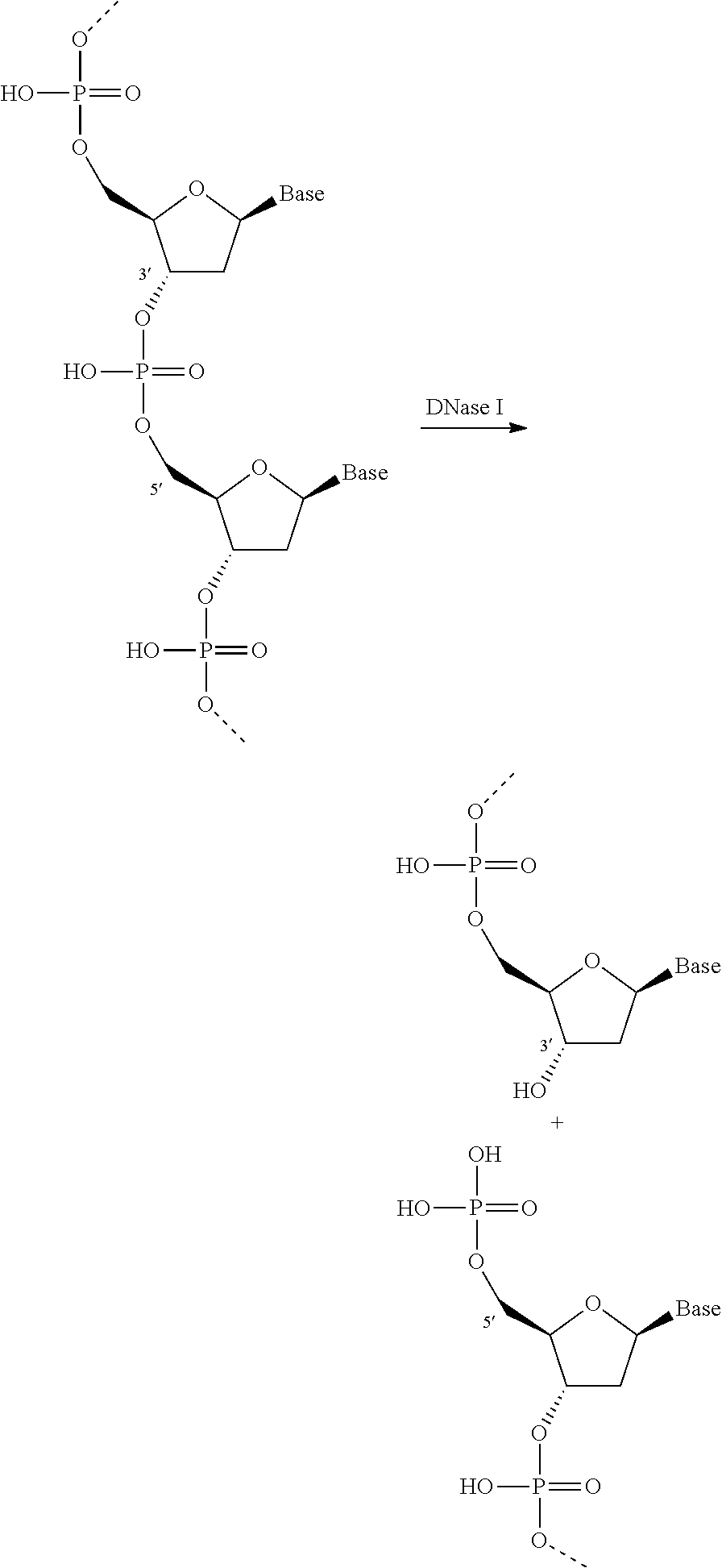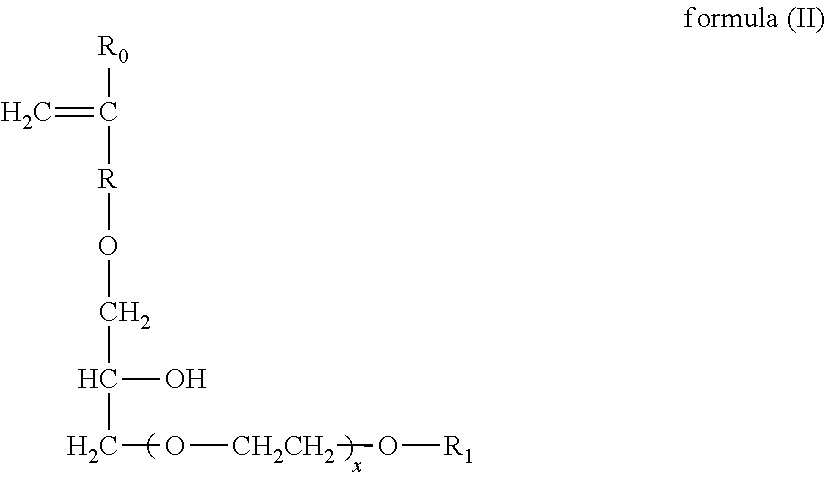Method of treating a fabric
a textile surface and fabric technology, applied in the field of textile surface treatment methods, can solve the problems of fabric whiteness, soil buildup over time, and the inability to use surfactants effectively,
- Summary
- Abstract
- Description
- Claims
- Application Information
AI Technical Summary
Benefits of technology
Problems solved by technology
Method used
Image
Examples
examples
[0242]The following example formulations are suitable for use in the method of the present invention and the dosages are selected to ensure the surfactant system concentration remains within the range 0.05 g / l to 1 g / l in the aqueous wash solution.
examples 1-7
Heavy Duty Liquid Laundry Detergent Compositions
[0243]
1234567Ingredients% weightAE1.8S1.520.510.250.87———AE3S————0.24——LAS12.88 18.39 14.75 8.739.3112.60 35.10 HSAS1.000.50—————AE90.400.300.300.30———AE8——————3.90AE7————0.251.40—C12-14 dimethyl Amine Oxide0.300.730.230.37———C12-18 Fatty Acid0.801.900.600.991.20—15.00 Citric Acid2.503.961.881.980.902.500.60Optical Brightener 11.000.800.100.300.050.50 0.001Optical Brightener 3 0.0010.050.010.200.50—1.00Sodium formate1.600.091.200.041.601.200.20DTI 10.320.05—0.600.100.600.01DTI 20.320.100.600.600.050.400.20Sodium hydroxide2.303.801.701.901.702.502.30Monoethanolamine1.401.491.000.70———Diethylene glycol5.50—4.10————Chelant 10.150.150.110.070.500.110.804-formyl-phenylboronic acid————0.050.020.01Sodium tetraborate1.431.501.100.75—1.07—Ethanol1.541.771.150.89—3.007.00Polymer 10.10—————2.00Polymer 20.300.330.230.17———Polymer 3——————0.80Polymer 40.800.810.600.401.001.00—1,2-Propanediol—6.60—3.300.502.008.00Structurant0.10—————0.10Perfume1.601....
examples 8 to 16
Unit Dose Compositions
[0245]These examples provide various formulations for unit dose laundry detergents. Compositions 8 to 12 comprise a single unit dose compartment. The film used to encapsulate the compositions in PVA.
89101112Ingredients% weightLAS28.0 31.5 33.3 29.8 33.3 AE3S2.8 1.4 0.7 2.1 0.7 AE74.2 2.1 1.1 3.2 1.1 Citric Acid0.6 0.6 0.6 0.6 0.6 C12-15 Fatty Acid14.8 14.8 14.8 14.8 14.8 Polymer 34.0 4.0 4.0 4.0 4.0 Chelant 21.2 1.2 1.2 1.2 1.2 Optical Brightener 10.200.250.010.010.50Optical Brightener 20.20—0.250.030.01Optical Brightener 30.180.090.300.01—DTI 10.10—0.200.010.05DTI 2—0.100.200.250.05Glycerol6.1 6.1 6.1 6.1 6.1 Monoethanol amine8.0 8.0 8.0 8.0 8.0 Tri-isopropanol amine——2.0 ——Tri-ethanol amine—2.0 ———Cumene sulphonate————2.0 Protease0.800.600.071.001.50Mannanase0.070.050.050.100.01Amylase 10.200.110.300.500.05Amylase 20.110.200.10—0.50Polishing enzyme 0.0050.05———Nuclease 0.0050.05 0.005 0.010 0.005Dispersin B 0.0100.05 0.005 0.005—cyclohexyl dimethanol———2.0 —A...
PUM
| Property | Measurement | Unit |
|---|---|---|
| temperature | aaaaa | aaaaa |
| temperature | aaaaa | aaaaa |
| temperature | aaaaa | aaaaa |
Abstract
Description
Claims
Application Information
 Login to View More
Login to View More - R&D
- Intellectual Property
- Life Sciences
- Materials
- Tech Scout
- Unparalleled Data Quality
- Higher Quality Content
- 60% Fewer Hallucinations
Browse by: Latest US Patents, China's latest patents, Technical Efficacy Thesaurus, Application Domain, Technology Topic, Popular Technical Reports.
© 2025 PatSnap. All rights reserved.Legal|Privacy policy|Modern Slavery Act Transparency Statement|Sitemap|About US| Contact US: help@patsnap.com



